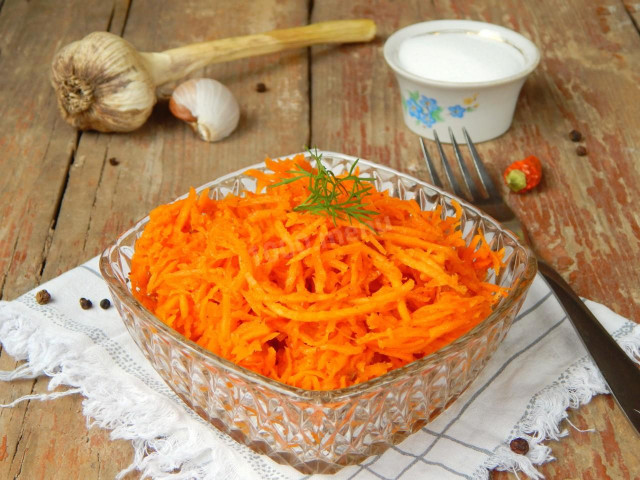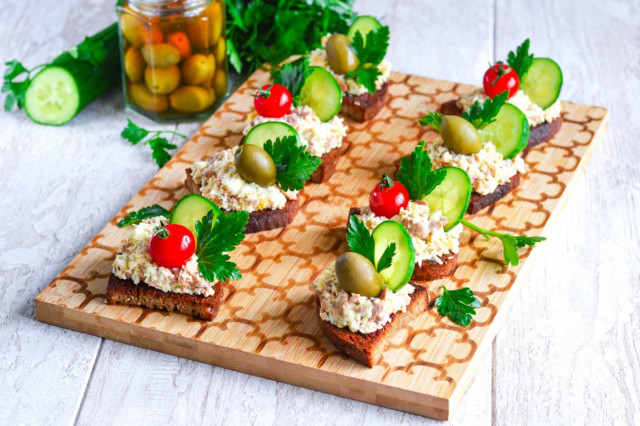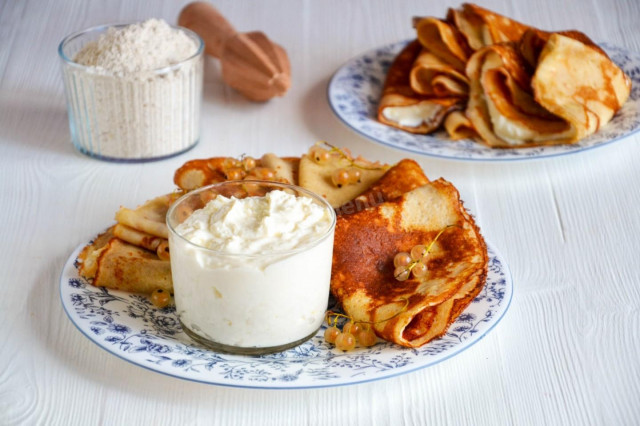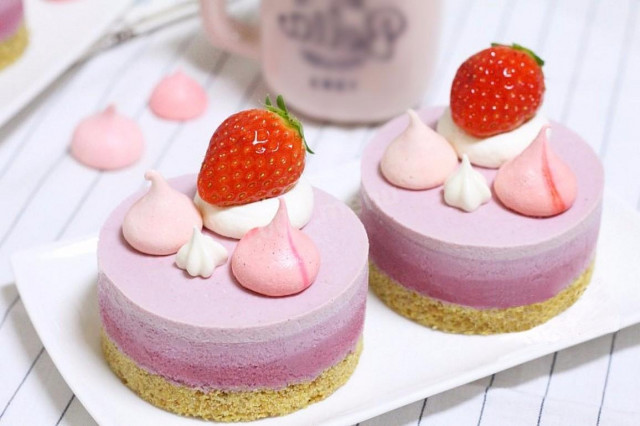Composition / ingredients
Step-by-step cooking
Step 1:
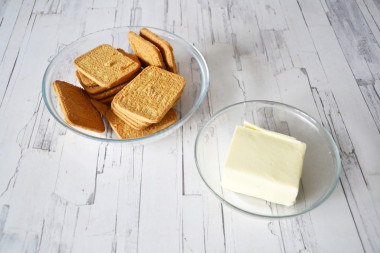
How to make a cottage cheese cake without baking? First, prepare the products for the base. You can take any sugar or sponge cookies. Or you can take nutty, I have almonds, and the cake turned out delicious. Choose high-quality butter with a pleasant aroma.
Step 2:
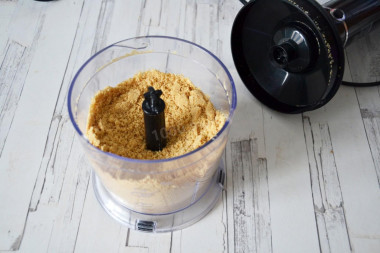
Chop the cookies into crumbs in a blender. Pour the crumbs into a suitable bowl where you will mix the "dough".
Step 3:

Melt the butter in any way convenient for you. The easiest way is in the microwave.
Step 4:

Pour the melted butter into the cookie crumbs.
Step 5:

Mix everything well. You should get a moist elastic crumb.
Step 6:
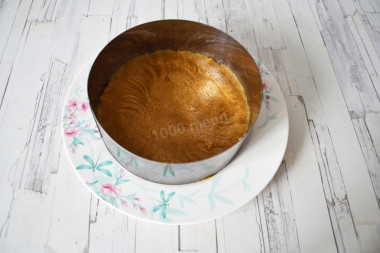
In a baking dish covered with food film (Ø 18-20 cm), put the crumb out of the cookie, smooth it out and carefully tamp it so that the cake fits snugly against the walls of the mold. Put the mold in the refrigerator so that the base freezes.
Step 7:
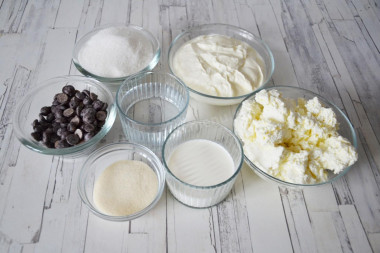
Prepare the products for the filling. It is advisable to take cottage cheese not dry, moist, without grains, 5-9% fat content. Sour cream can be fatter, 20-25% fat content. Chocolate is better bitter or dark. Cream is suitable for 10% fat content, no more.
Step 8:
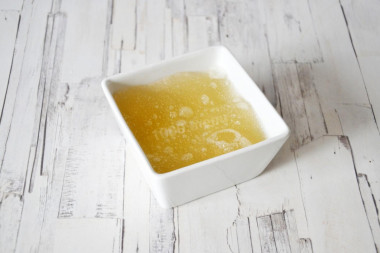
Fill gelatin with cold water (150-180 ml approximately). Leave it to swell for 10-15 minutes. And it is better to prepare gelatin according to the instructions on the package - it can be very different.
Step 9:
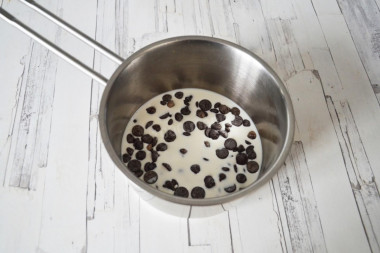
Pour cream into a saucepan, put the chocolate broken into pieces.
Step 10:

While stirring, melt the chocolate in cream over low heat. Cool the melted chocolate.
Step 11:
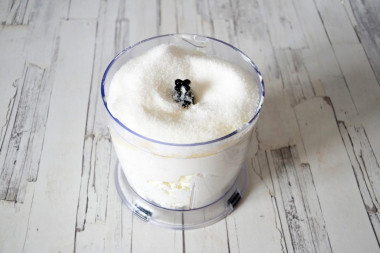
Put cottage cheese, sour cream and sugar in a blender bowl. Whisk everything until smooth.
Step 12:
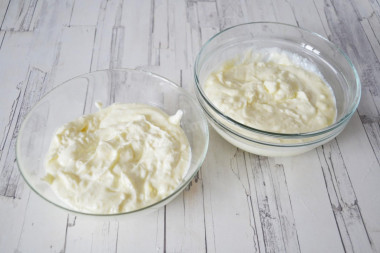
Divide the curd-sour cream mass into 2 equal parts.
Step 13:
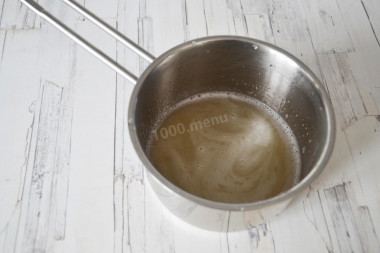
Heat the swollen gelatin until completely dissolved without boiling.
Step 14:
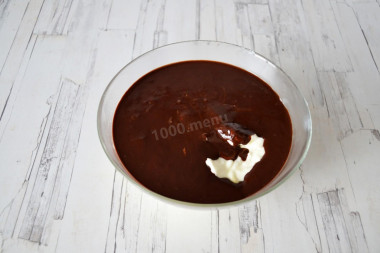
Pour melted chocolate into one part of the curd mass.
Step 15:
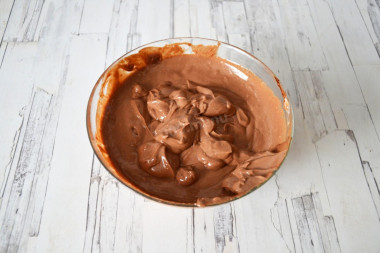
Mix the mass thoroughly so that the chocolate is evenly distributed.
Step 16:
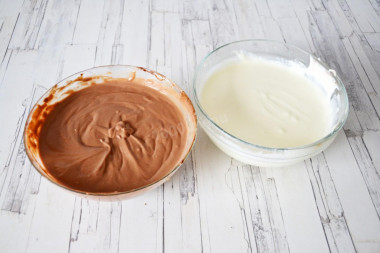
Pour half of the melted gelatin into the white curd mass, and the other half into the chocolate. Mix both masses thoroughly until smooth. They should be about the same consistency. This is necessary so that a drawing turns out on the surface of the cake. If one mass is heavier than the other, it will simply sink. We need both of them to stay on the surface. Therefore, the mass that is more viscous can be diluted with cream to the desired consistency.
Step 17:
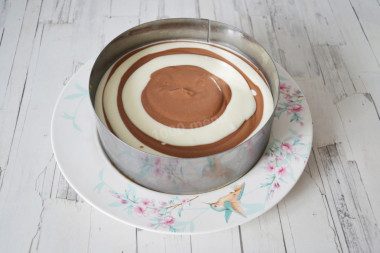
Take the cookie cake out of the refrigerator. Do not remove it from the mold. Pour 5 tablespoons of chocolate mass into the center of the cake directly into the mold, then 5 tablespoons of white curd mass. Alternating the two types of cream, fill in the entire form in this way.
Step 18:
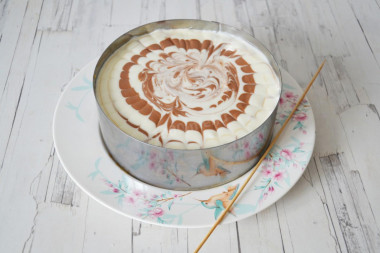
Make a pattern on the surface of the cake with a skewer. Just dip it in the cream and swipe from the center to the edges or vice versa. Put the cake in the refrigerator until the cream is completely solidified (this is about 5-8 hours).
Step 19:
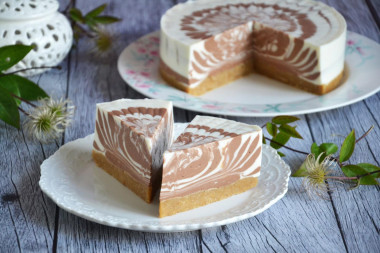
Remove the finished cake from the mold and cut into portions. Enjoy your meal!
To make a dish using gelatin work, be sure to pre-soak the gelatin in cold boiled water. The colder the water, the better. Leaf gelatin can simply be put in a bowl of water. Before soaking the powdered gelatin, first rinse the dishes with cold water so that the crystals do not stick to the bottom. It is important to pour powdered gelatin with water, and not pour it into the water. Otherwise, lumps cannot be avoided. Then allow time for the gelatin to swell (the exact time is indicated on the package).
Swollen gelatin is heated to 70-80 degrees. It should never be brought to a boil!. At a temperature of 100 ° C, the mass becomes fibrous and viscous, collagen protein is destroyed and gelatin loses its jelly-forming properties.
Caloric content of the products possible in the composition of the dish
- Buttermilk - 36 kcal/100g
- Cream of 20 % fat content - 300 kcal/100g
- Cream of 10% fat content - 120 kcal/100g
- Cream - 300 kcal/100g
- Sour cream with 30% fat content - 340 kcal/100g
- Sour cream of 25 % fat content - 284 kcal/100g
- Sour cream with 20 % fat content - 210 kcal/100g
- Sour cream of 10 % fat content - 115 kcal/100g
- Sour cream - 210 kcal/100g
- Cottage cheese of 40% fat content - 466 kcal/100g
- Cottage cheese of 20% fat content - 233 kcal/100g
- Cottage cheese of 18% fat content - 226 kcal/100g
- Cottage cheese of 10% fat content - 156 kcal/100g
- Low-fat cottage cheese - 75 kcal/100g
- Cottage cheese with sour cream - 260 kcal/100g
- Fruit cottage cheese - 147 kcal/100g
- Soft dietary cottage cheese - 170 kcal/100g
- Cottage cheese "vitalinia" - 64 kcal/100g
- Cottage cheese "morning" ( "danone") without sugar - 91 kcal/100g
- Cottage cheese - 156 kcal/100g
- Granulated sugar - 398 kcal/100g
- Sugar - 398 kcal/100g
- Butter 82% - 734 kcal/100g
- Amateur unsalted butter - 709 kcal/100g
- Unsalted peasant butter - 661 kcal/100g
- Peasant salted butter - 652 kcal/100g
- Melted butter - 869 kcal/100g
- Gelatin - 355 kcal/100g
- Bitter chocolate - 539 kcal/100g
- Shortbread cookies - 716 kcal/100g



